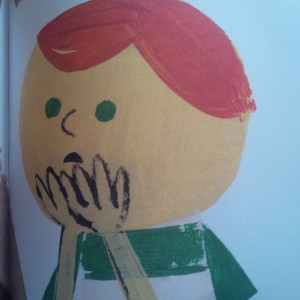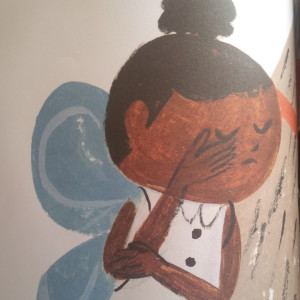If that isn’t a perfect title for a children’s picture book, I don’t know what is. What child can resist reading a picture book called THE DEAD BIRD? In this case, it’s a reissue of the classic written by Margaret Wise Brown published in 1938, and recently re-illustrated by Christian Robinson, (Harper, an imprint of HarperCollins, 2016.) The dramatic thrill of discovering a dead bird on the ground and coming up with plans to bury it is a right of passage of childhood. (Far better than the body of a mouse, say, or something larger like a squirrel. Yuck.) How many adults can remember finding a baby bird after it had fallen out of its nest and rushing as professionally as paramedics to save it? A cardboard box, tissue for it to lie on, leaves for it to eat. A worm, maybe. Will it live? Sadly, not without its Mother. As we learned when we were young, to put a baby bird back in its nest after touching it with our hands would mean certain maternal rejection. It was so tragic, so deliciously dramatic.
Some negative comments have been made about this book – both when it was originally published and now with the re-issue – suggesting that it’s a stark handling of a delicate matter and too tough for children. I can only imagine they were written by people who don’t spend much time around real children. Children are warm-hearted, cold-blooded little humans. They take death in stride and Margaret Wise Brown knew exactly how to talk to them – without false sympathy and tell it to them straight. “The bird was dead when the children found it,” starts this wonderful, realistic story. They touch its body to see if its heart is beating. Alas, it’s not. “That was how they knew it was dead.” Even as they hold it, it starts to get cold and stiff. Imagine the thrill and horror children would feel when that happens! This is real life! “… cold dead and stone still with no heart beating.” At the risk of sounding callus, that sentence makes me laugh. I can hear a solemn child delivering those very words now.
It’s not that the children in the book are heartless. There are wonderful illustrations of their feelings. “They were very sorry the bird was dead …”  but they don’t waste time with crocodile tears. They understand that some ceremony is required and dress up appropriately, complete with animal face masks and butterfly wings, to show respect and bury it. They sprinkle flowers around the hole and sing a wandering song “Oh bird, you’re dead, you’ll never fly again …”
but they don’t waste time with crocodile tears. They understand that some ceremony is required and dress up appropriately, complete with animal face masks and butterfly wings, to show respect and bury it. They sprinkle flowers around the hole and sing a wandering song “Oh bird, you’re dead, you’ll never fly again …”
 “Then they cried because their singing was so beautiful …”
“Then they cried because their singing was so beautiful …”
Ha! Who says children can’t handle the death of a bird? That they should be denied the solemn tradition of burying it?
Eventually, of course, in a healthy childlike way, their lives move on. “And every day, until they forgot, they went and sang to their little dead bird …”
Until they forgot.
And rightly so.










